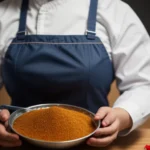The Ultimate Guide to Spanish Tapas: Small Plates, Big Flavors
Introduction
When it comes to exploring the culinary delights of Spain, one cannot overlook the charm and appeal of tapas. These small plates of delicious bites are a quintessential part of Spanish dining culture, and offer a wide array of flavors that cater to every palate. Whether you’re a seasoned foodie or a curious traveler, delving into the world of Spanish tapas is sure to be a delightful experience. In this guide, we will take you on a journey through the fascinating world of Spanish tapas, highlighting their history, common ingredients, serving etiquette, and some popular tapas recipes. So sit back, relax, and get ready to indulge in the ultimate guide to Spanish tapas.
The History of Tapas
Tapas have a rich and storied history that dates back to the 19th century in Spain. The word “tapas” is derived from the Spanish verb “tapar,” which means to cover or lid. Legend has it that tapas were originally served as small plates of food that were placed on top of drinks to prevent insects from getting into the glass. Over time, this practice evolved into the tradition of serving small bites of food alongside drinks in bars and taverns. Tapas quickly became a social custom in Spain, with friends and family gathering to share these delectable treats while enjoying each other’s company.
Common Ingredients in Spanish Tapas
Spanish tapas are known for their bold and vibrant flavors, which are achieved through the use of fresh and high-quality ingredients. Some of the common ingredients found in Spanish tapas include:
– Olives: Spanish olives are a staple in tapas dishes, adding a briny and salty flavor to the dish.
– Chorizo: This spicy cured sausage adds a smoky and savory flavor to tapas dishes.
– Manchego cheese: A type of cheese made from sheep’s milk, Manchego cheese lends a rich and nutty flavor to tapas.
– Jamón: Spanish cured ham, such as Jamón Serrano or Jamón Ibérico, is a popular ingredient in tapas dishes, adding a salty and savory flavor.
– Pimientos de Padrón: These small green peppers are mild in flavor, making them a popular choice for tapas dishes.
– Anchovies: Spanish anchovies are usually served in olive oil, adding a salty and umami flavor to tapas dishes.
– Patatas bravas: These fried potatoes are a popular tapas dish, typically served with a spicy tomato sauce or aioli.
Serving Etiquette
When it comes to enjoying Spanish tapas, there are a few etiquette guidelines to keep in mind. Firstly, tapas are meant to be shared, so it’s customary to order several different dishes and share them with your dining companions. In Spain, tapas are often enjoyed as part of a leisurely meal, with each dish savored and enjoyed in a relaxed setting. It’s also common to order a variety of tapas dishes and share them family-style, allowing everyone to sample a bit of everything.

Popular Tapas Recipes
There are countless variations of tapas dishes to enjoy, ranging from classic recipes to modern twists. Here are a few popular tapas recipes to try at home:
1. Patatas bravas: These crispy fried potatoes are typically served with a spicy tomato sauce or aioli.
2. Gambas al ajillo: This dish features sizzling shrimp cooked in garlic and olive oil, perfect for seafood lovers.
3. Tortilla española: A classic Spanish omelette made with eggs, potatoes, and onions, this dish is a must-try for tapas enthusiasts.
4. Albondigas: These Spanish meatballs are cooked in a savory tomato sauce, perfect for meat lovers.
5. Pinchos de pollo: These skewers of marinated chicken are grilled to perfection, making for a delicious tapas dish.
6. Croquetas: These creamy and cheesy croquettes are popular tapas dishes, filled with ham, cheese, or vegetables.
Pairing Tapas with Wine
In Spain, tapas are often enjoyed alongside a glass of wine, making for a perfect pairing that enhances the flavors of both the food and the wine. When it comes to pairing tapas with wine, there are a few guidelines to keep in mind. For lighter tapas dishes, such as seafood or vegetable-based dishes, opt for a crisp and refreshing white wine, such as Albariño or Verdejo. For heartier tapas dishes, such as meatballs or chorizo, a bold and robust red wine, such as Tempranillo or Garnacha, is an excellent choice. Additionally, sparkling wines, such as Cava or Prosecco, pair well with a wide range of tapas dishes and add a festive touch to any meal.
Exploring Tapas in Different Regions of Spain
While tapas are enjoyed throughout Spain, each region has its own unique culinary traditions and specialties. Here are a few regions in Spain known for their delicious tapas offerings:
1. Andalusia: This region is known for its vibrant and flavorful tapas, including classics such as gazpacho, salmorejo, and fried fish.
2. Basque Country: The Basque Country is renowned for its pintxos, a type of tapas served on skewers, often featuring ingredients such as seafood, cheese, and vegetables.
3. Catalonia: In Catalonia, you’ll find tapas dishes such as patatas bravas, escalivada, and butifarra, all showcasing the region’s rich culinary heritage.
4. Galicia: Galicia is famous for its seafood tapas, including dishes such as pulpo a la gallega (octopus) and empanadas de atún (tuna empanadas).
5. Madrid: In the capital city of Madrid, you’ll find a wide range of tapas dishes, from classic favorites like croquetas and gambas al ajillo to modern interpretations of traditional dishes.
Tips for Hosting a Tapas Party
If you’re looking to host a tapas party at home, here are a few tips to ensure a successful gathering:
1. Plan ahead: Create a menu of tapas dishes you’d like to serve and make a list of ingredients you’ll need.
2. Prep in advance: Many tapas dishes can be prepared ahead of time, making it easier to enjoy the party without feeling stressed.
3. Offer a variety: Include a mix of meat, seafood, and vegetarian tapas dishes to cater to all tastes and dietary preferences.
4. Serve with flair: Present your tapas dishes on platters or small plates, and consider adding decorative touches such as fresh herbs or edible flowers.
5. Relax and enjoy: Remember that the most important part of hosting a tapas party is gathering with friends and family to enjoy delicious food and good company.
Conclusion
Spanish tapas are a culinary treasure that embodies the vibrant flavors and rich culinary traditions of Spain. Whether you’re enjoying tapas in a bustling bar in Barcelona or hosting a tapas party at home, these small plates offer a delightful and delicious way to experience Spanish cuisine. From classic dishes like patatas bravas and tortilla española to modern interpretations of traditional recipes, the world of Spanish tapas is as diverse and flavorful as the country itself. So grab a glass of wine, savor each bite, and immerse yourself in the ultimate guide to Spanish tapas: small plates, big flavors. ¡Que aproveche! (Enjoy your meal!)
FAQs about “The Ultimate Guide to Spanish Tapas: Small Plates, Big Flavors”
- What distinguishes “The Ultimate Guide to Spanish Tapas: Small Plates, Big Flavors” from other books on Spanish cuisine? This book focuses specifically on Spanish tapas, offering an in-depth exploration of the diverse range of small plates that make up this iconic culinary tradition.
- Which tapas dishes are featured in this guide? “The Ultimate Guide to Spanish Tapas” features a comprehensive selection of tapas dishes, including classics like patatas bravas, gambas al ajillo, tortilla española, croquetas, and boquerones, as well as lesser-known regional specialties.
- Are specific Spanish regions and their tapas traditions highlighted in this book? Yes, this book highlights specific Spanish regions and their tapas traditions, showcasing the regional variations and unique flavors that characterize tapas culture across Spain.
- How does this book celebrate the conviviality and social aspect of enjoying tapas in Spain? “The Ultimate Guide to Spanish Tapas” celebrates the conviviality and social aspect of enjoying tapas in Spain by exploring the tradition of sharing small plates with friends and family, accompanied by good wine and lively conversation.
- Can readers expect to find practical recipes and serving suggestions for preparing tapas at home in this book? Absolutely! “The Ultimate Guide to Spanish Tapas” provides practical recipes, serving suggestions, and tips for creating an authentic tapas experience at home, allowing readers to savor the flavors of Spain in their own kitchens. Whether you’re hosting a tapas party or simply craving a taste of Spain, this book has you covered.
Advantages:
- Clarity: The title “The Ultimate Guide to Spanish Tapas: Small Plates, Big Flavors” clearly communicates the content focus, indicating that the guide will provide comprehensive information about Spanish tapas, their variety, and the bold flavors they offer.
- Educational Value: By positioning itself as the ultimate guide, the title suggests that readers will gain extensive knowledge about Spanish tapas, including their history, cultural significance, and diverse range of ingredients and preparations.
- Culinary Exploration: Tapas are an integral part of Spanish culinary culture, and the title encourages readers to explore this aspect, fostering a deeper appreciation for Spanish cuisine and its emphasis on communal dining and sharing small plates.
- Practicality: As a guide to Spanish tapas, the title serves a practical purpose for readers interested in experiencing or replicating the tapas dining experience, providing them with valuable insights, tips, and recipe recommendations.
- Inspiration for Dining and Entertaining: The title may inspire readers to host tapas parties or experiment with making tapas at home, offering them inspiration and guidance for creating delicious small plates that can be enjoyed with friends and family.
Disadvantages:
- Cultural Simplification: Focusing solely on Spanish tapas may oversimplify the complexity and diversity of Spanish cuisine, potentially overlooking other aspects of Spanish gastronomy, such as regional specialties or main dishes.
- Oversimplified Focus: While the title emphasizes Spanish tapas, it may overlook lesser-known tapas variations or regional differences, limiting the depth of the discussion and potentially excluding certain tapas styles from the guide.
- Accessibility: Some ingredients used in traditional Spanish tapas may be difficult to find outside of Spain or specialty markets, limiting the practicality of preparing authentic tapas for readers in certain regions.
- Audience Limitation: The title may primarily appeal to readers with a specific interest in Spanish cuisine or tapas culture, potentially excluding those who prefer other types of cuisine or are seeking a broader overview of global culinary traditions.
- Subjectivity: The title’s assertion of being the ultimate guide to Spanish tapas may be subjective, as different readers may have varying opinions on what constitutes the ultimate guide or the best tapas recipes.
















